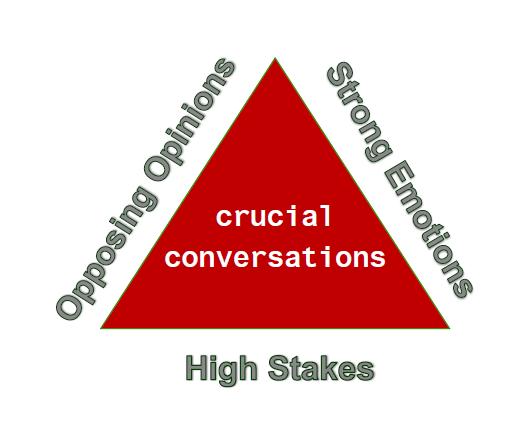Month: December 2013
#SAVMP Hangout- How do you handle “crucial conversations”?
In this hangout instructional leaders Miguel Guhlin, Shannon Fuller, Ben Gilpen and Gerald Hudson discuss how they would handle three critical conversations with their staff.
Week 17: Bringing Parents Into The Learning Process #SAVMP
Recently I wrote a post on my own blog regarding parents and some ideas on how to bring them into the learning process at school. This week, I encourage you to share some of the ways that you bring parents into the classroom through your own blogs. Here is the full text of my recent post below.

cc licensed ( BY SA ) flickr photo shared by Spiro Bolos
“The role of parents in the education of their children cannot be overestimated.” ~Unknown
When you ask parents from any country in the world, what they ask their children at the end of the day about school, their question is very similar:
“What did you learn today?”
The disconcerting thing is that the answer is almost always exactly the same.
“Nothing.”
Parents are a great untapped resource in our schools, and social media gives us an opportunity to engage them in their child’s classroom in a way that we never were able to before. The traditional modes of communication are still vital in the way we connect with parents. I am a firm believer in the importance of calling parents to share good news and hearing a voice is the only way that bad news is delivered. I strongly suggest that an educator never deliver any bad news about a child over email. Although I do not have children of my own, I remember my secretary distinctly saying to me, “When you call a parent to deliver some bad news about their child, you are about to destroy their world. Make sure that you let them know the positives and that you still care about their kid.” That advice has always stuck with me.
With all of that being said, I think that there is a larger role that we can ask parents to play in the learning of their child. In my view, if a parent reinforces the learning of the school, at home, the child is more likely to be successful.
Here are some ways that we can build strong connections with the parents in our school communities:
1. Use what the kids use – Often times, when communicating home with parents, we have created special platforms or have put a lot of money in developing a website to ensure that we constantly “branding” our school. Yet this type of communication is all surface with little depth. If we can connect using mediums (blogs, YouTube, Twitter, etc.) that our students use, not only are we building an understanding and instructional leadership within our schools, but we are familiarizing our parents with many of the tools that their children will be using. The first time a parent uses a blog, should not be from their child, but from adults in the school. This shows that we are not just “throwing” kids online, but we are building our own understanding as well.
2. Have an open mind – I cannot count the number of times I have heard from teachers or administrators that “the parents will never go for this”, when talking about the changing landscape in schools. My question is, “Have you asked them?”
I fell prey to this assumption before. After a session with a group of parents, one of the parents had her hand raised and looked annoyed with what I had just presented. Preparing myself for the pushback I was used to receiving, she said to me, “Why are we not moving faster?” I couldn’t believe it and was ecstatic to know that there were many parents out there that are pushing for the same opportunities for learning that many progressive educators are pushing for.
You may not have all parents excited about the changes that are happening in school, but they are out there. You have to find them which leads into the next point.
3. Tap into parent leadership – One thing that we have to realize is that parents are more likely to listen to other parents. Not necessarily educators that have children because they may feel their view is biased, but other parents in your school community. What is imperative is that we connect with parents that have a voice with others and get their feedback on new initiatives. This is not necessarily a parent-council type meetings, but in one-on-one conversations. It is also not a time to simply tell parents what the school is trying to do, but to listen to them, get feedback, implement their advice, and show them that you have listened. Once this happens, it is important that we ask those parents to talk to others so that they get their perspective. Focusing on developing parent leadership, listening to them, and empowering their voice is crucial if we want to move forward as a school community.
4. Focus on open communication – Every week I would write an email to staff sharing where I was during the week and some articles that I suggested for them to read. I thought about it, and there was no reason why I shouldn’t share this information with parents. I then decided to share that information through a blog and make it open to our community. Obviously there was nothing shared in this space that would be considered confidential, but it was important to share the learning my staff was doing openly with our parents. Sharing blogs and articles from other schools, helps to show your community that the things that our school is doing is not something specific to our school, but many others are taking on similar endeavours. Leading parents to a Twitter hashtag for the school and encouraging staff to tweet to it during conferences, also shows what teachers are learning in real time while also giving a parents to connect with them in that space as well. Blogs, Twitter, and other Web 2.0 technologies allow parents to not only hear the conversation, but to be a part of it. With most people comfortable with back-and-forth communication, we have to make sure that we communicate in this same manner.
5. Create learning opportunities – Traditionally, schools have had “parent-nights” where new initiatives or learning or simply shared with parents. Parent-teacher interviews were one of these ways, where parents simply heard about what their child was learning. But with activities such as “student-led conferences”, parents are actually engaging in the learning that is happening with their kids. Leaders like Patrick Larkin have had nights with parents where does not tell them about blogging and Twitter, but actually teaches them and gets them to engage in the practice. With all of the amazing things that many schools are doing, it is very powerful to give parents the opportunity to learn these activities so that they can partake at home with their child.
You often hear comments that parents are advocating for the old ways of school, but ultimately, they just want the best for their kids. If we focus on bringing parents into the schools, it is my hope that they become grateful of how much better school can be now, they will be advocating for change alongside educators. When we work together with our parent communities and focus on bringing them in on the learning of their child, the opportunities for our students will be endless.
Week 16: Critical Conversations as an Administrator: #SAVMP

“We succeed or fail one conversation at a time.”
Hard conversations are never easy. Regardless of how “right” they may be, it doesn’t make it any easier on the person giving it, or the person receiving it. It can be one of the most difficult parts of an administrators job, and can easily turn into a disaster. When problems arise, in the worst companies people will withdraw into silence. In the best companies, people will hold a crucial confrontation, face to face and in the moment. And they’ll hold it well.
Dialogue example – Steps to Mastering a Crucial Conversation
Before embarking on a critical, or crucial, conversation…ask yourself these three questions:
- How important is it for the students or staff that I bring this up? Is it a “me” thing or is it an”impacting student success” thing?
- Is what is going on in the classroom unsafe or damaging to students or staff?
- What would happen if I didn’t have the conversation?
Other tips to keep in mind:
- Have a plan. Who will be involved in the conversation? Where will it take place? When will it happen? Will it be documented?
- What should your role be? Remember to listen to all parties involved. Be genuine in your efforts to resolve the issue at hand. Find a solution that fits. Beware of hidden agendas.
- You are the LEADER. It all begins and ends with you. The tone, intent, and follow through are all going to depend on how you handle the situation.
There will be a google hangout this week on “Critical Conversations”, stay tuned! (I will update this post when time and guests are decided!)
For your prompt for this week, blog about how you handle crucial conversations and at what point you step in to have them. What advice would you give to a new administrator in having to have a crucial, or fierce, conversation?
Have a great week, and where ever you are, stay warm!
Amber
Resources used and for more information:
Crucial Conversations: Tools for talking when stakes are high Kerry Patterson, Joseph Grenny, Ron McMillan, Al Switzler
Crucial Accountability: Tools for Resolving Violated Expectations, Broken Commitments, and Bad Behavior
Kerry Patterson, Joseph Grenny, David Maxfield, Ron McMillan, Al Switzler
Fierce Conversations: Achieving Success at Work and in Life, One Conversation at a Time
Susan Scott
Critical Conversations for Dummies
Dr. Christina Schlachter
Week 15: Instructional Leadership #SAVMP
Stephen Covey talks about the notion of great leadership and how it is measured by “character and credibility”. Character is basically that people see you have good values in who you are, and credibility is in what you have to offer. In much of our conversations in the #SAVMP program, it has talked about the importance of trust and fostering effective relationships. If you have no trust, you will have change.
Instructional leadership is an important part of becoming an effective principal, yet many teachers question if there administrators would be effective teachers. How can you change what the classroom looks like if you were never an effective teacher? This was something that I focused on in my writing and shared things that I looked for in today’s classroom. I also wanted to immerse myself in work with my teachers and started to do “1-to-1” sessions talking about things staff could do with students. This is the focus on “credibility”.
So…in your work as a leader, what are some of the things that you do to not only show your knowledge and understanding of today’s classroom, but also get deep into the work with your staff and students? Please share some of your learning to the #SAVMP hashtag through your tweets, or blog.
Have a great week!
George